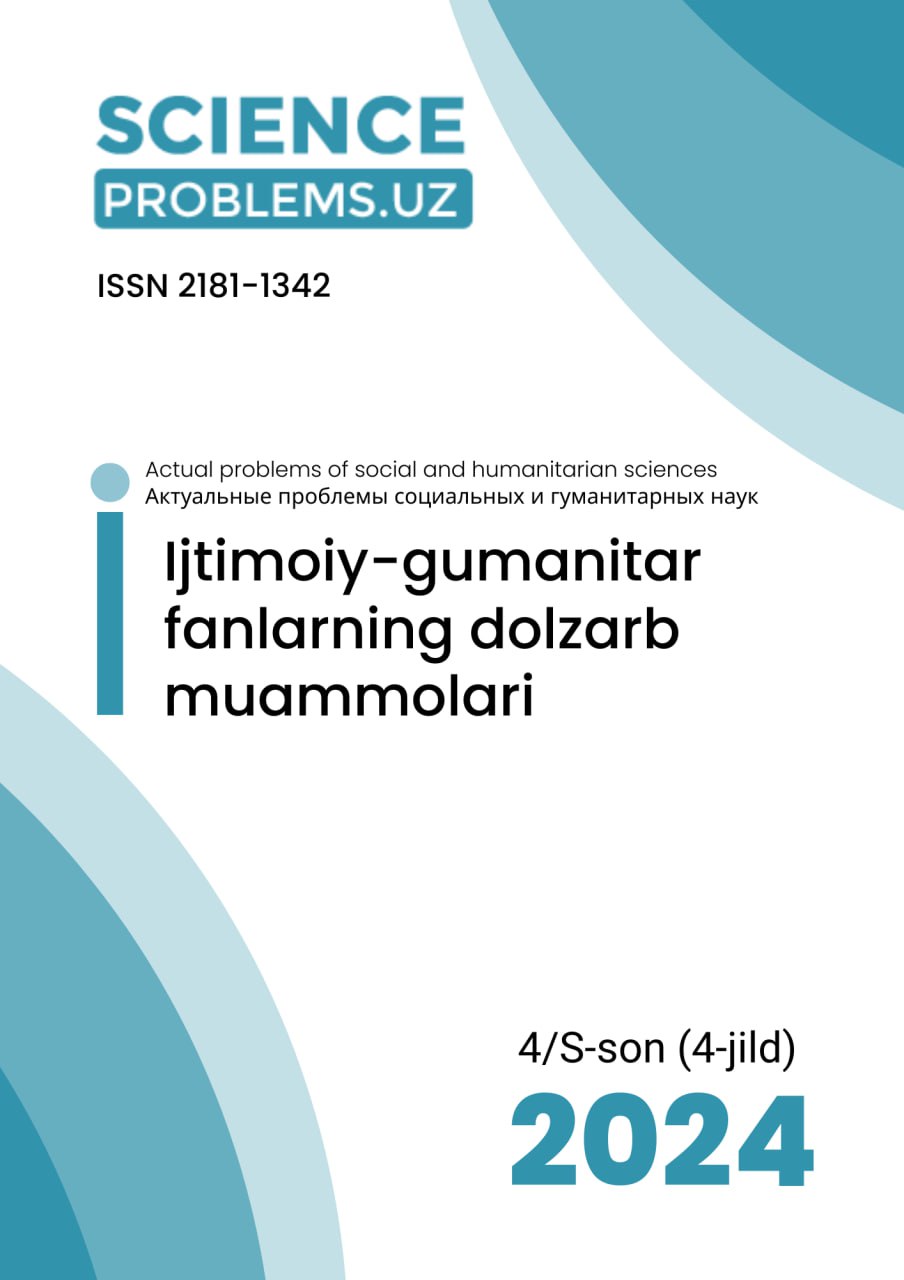METODOLIK KELAJAKLAR: KOGNITIV STILISTIKANI BOG'LASH
Kalit so'zlar
https://doi.org/10.47390/SPR1342V4SI4Y2024N33Kalit so'zlar
kognitiv stilistika, adabiy tahlil, kognitiv jarayonlar, eksperimental usullar, ko'zni kuzatish, neyroimaging, sun'iy intellekt, metodik yutuqlar, adabiyotshunoslik, kognitiv fan.Annotasiya
"Metodologik kelajak: kognitiv stilistikani bog'lash" maqolasi kognitiv stilistikaning rivojlanayotgan manzarasini, kognitiv fan va adabiy tahlilni uyg'unlashtirgan fanlararo sohani o'rganadi. Unda ushbu sohadagi metodologik yutuqlar va kelajakdagi yo'nalishlar muhokama qilinadi. Asosiy mavzular adabiy tajribani tushunish uchun neyrokognitiv yondashuvlarni birlashtirish va stilistik tahlil uchun hisoblash vositalarini qo'llashni o'z ichiga oladi. Muallif adabiy mashg'ulot paytida o'quvchilarning javoblari va kognitiv jarayonlarni o'rganish uchun ko'zni kuzatish va neyroimaging kabi empirik usullarning muhimligini ta'kidlaydi. Maqolada, shuningdek, stilistik tadqiqotlarni yaxshilash, matn xususiyatlari va o'quvchilarning o'zaro ta'siri haqida chuqurroq ma'lumot berishda sun'iy intellekt va mashinani o'rganish imkoniyatlari ta'kidlangan. Maqolada kognitiv nazariyalarni ilg'or analitik usullar bilan bog'lash orqali, kelajakdagi tadqiqotlar adabiyotning bilimga qanday ta'sir qilishini tushunishimizni sezilarli darajada oshirishi va adabiyot nazariyasi va kognitiv fan bo'yicha yangi istiqbollarni taklif qilishi mumkin.
Manbalar
Austen, Jane. Pride and Prejudice. – London: T. Egerton, 1813. – 432 p.
Berman, Jessica. Modernist Commitments: Ethics, Politics, and Transnational Modernism. – New York: Columbia University Press, 2011. – 352 p.
Eliot, T.S. The Waste Land. – New York: Boni & Liveright, 1922. – 64 p.
Frost, Robert. The Road Not Taken and Other Poems. – New York: Henry Holt and Company, 1916. – 112 p.
Mohammad, Saif M., and Peter D. Turney. Emotion, Sentiment, and Social Media: Affective Text Analysis in the Digital Age. – London: Routledge, 2017. – 238 p.
Plath, Sylvia. Ariel. – New York: Harper & Row, 1965. – 105 p.
Rayner, Keith, et al. Eye Movements and Information Processing During Reading. – New York: Psychology Press, 1998. – 472 p.
Semino, Elena, and Jonathan Culpeper (Eds.). Cognitive Stylistics: Language and Cognition in Text Analysis. – Amsterdam: John Benjamins Publishing Company, 2002. – 333 p.
Stockwell, Peter. Cognitive Poetics: An Introduction. – London: Routledge, 2002. – 224 p.
Woolf, Virginia. To the Lighthouse. – London: Hogarth Press, 1927. – 310 p.
Ашурова Д. У. Стилистика текста в парадигме когнитивной лингвистики. — Ташкент 2003
Болотнова Н.С. Об основных тенденциях развития стилистики и статусе когнитивной стилистики // Вопросы когнитивной лингвистики. 2012. №3. URL: https://cyberleninka.ru/article/n/ob-osnovnyh-tendentsiyah-razvitiya-stilistiki-i-statuse-kognitivnoy-stilistiki
Ван Дейк Т.А. Язык. Познание. Коммуникация / под ред. В.И. Герасимова. М., 1989.
Гаспаров Б.М. Язык, память, образ. Лингвистика языкового существования. М., 1996.
Дымарский М.Я. Проблемы текстообразо-вания и художественный текст (на материале русской прозы XIX-XX вв.). СПб., 1999.
Инамова Д. Э. Новые подходы в изучении стилистических явлений / Д. Э. Инамова. — Текст: непосредственный // Молодой ученый. — 2019. — № 26 (264). — С. 338-340. — URL: https://moluch.ru/archive/264/61107/
Караулов Ю.Н. Русский язык и языковая личность. М., 1987.
Левина Г.М. Невербальная вербальность: некоторые вопросы и уточнения понятия «дискурс» // Мир русского слова. 2003. № 3. С. 64-71.








